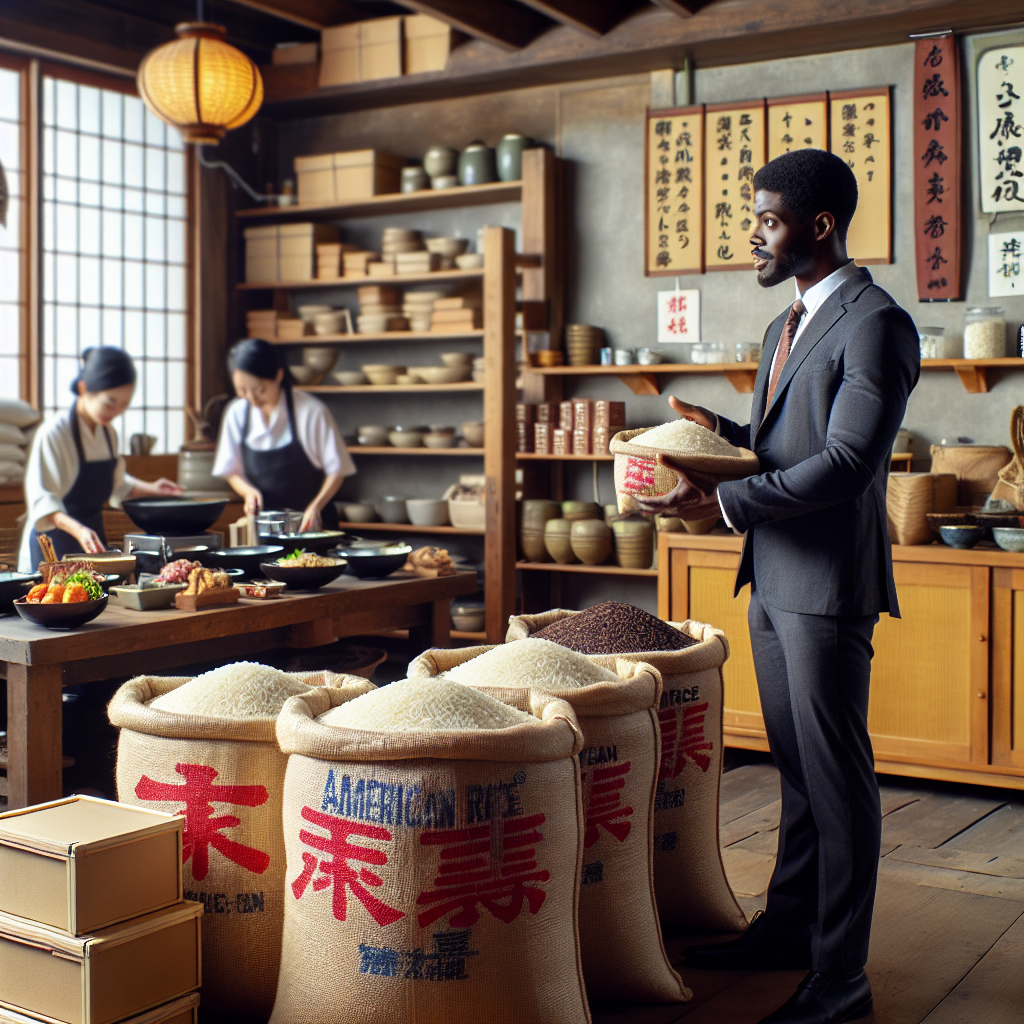In recent times, the staple food of Japan, rice, has faced a severe shortage, leading to a significant surge in prices. This shortage has prompted unique solutions, with some Japanese businesses turning to American rice as an alternative. Arata Hirano, the owner of a restaurant in Tokyo, made headlines by choosing to purchase California-grown Calrose rice due to its comparatively lower cost than domestically produced rice.
According to reports from Reuters, the price of Calrose rice purchased by Hirano has doubled since last summer. Despite the increase, it remains a more economical option compared to rice grown in Japan. Hirano emphasized that he would continue buying American rice as long as it remained cheaper than domestic alternatives. His restaurant menu includes dishes ranging from fish to rice, soups, and side dishes.
The past year has seen a sharp increase in wholesale prices of domestic rice, skyrocketing by around 70%, reaching the highest levels recorded since 2006. In March of this year, Japan’s core consumer price index rose by 3.2%, with rice prices experiencing the most significant increase in over 50 years.
Data released by the Japanese Ministry of Internal Affairs revealed a staggering 92.1% year-on-year increase in rice prices in March, marking the largest surge recorded since 1971. In the second week of April, the average retail price of an 11-pound (about 5 kilograms) bag of rice was approximately $30, more than double the price from the same period the previous year.
The rice shortage has had a profound impact on daily life in Japan, where rice is an integral part of the culture, used in a variety of ways including sushi, sake brewing, and ceremonial rituals. Eateries have responded by increasing prices and discontinuing complimentary rice refills, while shelves in grocery stores are witnessing a swift disappearance of packaged rice. Purchase restrictions have been implemented, limiting customers to buying only one bag of rice per visit. Some Japanese travelers are even purchasing rice while abroad in other Asian countries.
Daisuke Komaeda, a researcher at the NLI Research Institute, cited a decrease in cultivation areas leading to lower yields as one of the reasons behind the rice price hike. Additionally, the resurgence of the tourism industry post-pandemic has contributed to an increased demand for dining establishments, further straining the supply chain.
Kaori Wataya, a 45-year-old mother of three, reflects the sentiments of many Japanese consumers facing the rice price surge. She expressed concern over the high cost of rice outside a supermarket in western Tokyo, highlighting the challenges faced by households in adapting to the changing market dynamics.
Retailers, too, are feeling the pressure, with Kazuo Kurihara, an 86-year-old shop owner in western Tokyo, noting the challenges of sourcing rice from wholesalers due to incessant price escalations. The uncertain market conditions are creating a ripple effect throughout various sectors, underscoring the gravity of the rice supply issue in Japan.
In a bid to offer more accessible options to consumers, major supermarket chain Aeon introduced a blend of 80% American rice and 20% Japanese rice, attracting favorable responses for being approximately 10% cheaper than domestically produced rice. Similarly, fast-food chains like Matsuya and restaurant operators like Colowide have begun serving American rice. Taiwan-produced rice at Seiyu supermarket has been consistently selling out since last year.
For decades, Japan has maintained a preference for domestically grown rice for consumption purposes rather than imports. However, the current supply challenges have necessitated a reevaluation of traditional practices, hinting at a possible shift in mindset among Japanese businesses and consumers.
Despite ongoing trade negotiations between the U.S. and Japan, the looming rice shortage remains a pressing issue. The recent talks have raised concerns, with President Trump acknowledging Japan’s reluctance towards American rice exports, further fueling discussions on potential solutions to address the crisis.
As part of the negotiations, the Japanese government is contemplating expanding rice imports from the U.S. to alleviate the supply constraints. Any rice surpassing the quota limit will be subject to a tariff of 341 yen per kilogram. While the quantity of imported rice exceeding limits remains relatively minor, the trend underscores the evolving landscape of rice trade in Japan.
In a notable development, Kanematsu Corporation, a major rice importer, procured a substantial 10,000 tons of American rice this year, catering to increasing demands from various sectors. The reception towards imported rice quality and taste has been largely positive, with consumers like Miki Nihei expressing openness to non-Japanese rice as long as it offers a more cost-effective alternative.
Amidst these transformations in the rice market, the possibility of South Korea exporting 24 tons of rice to Japan in June marks a significant shift in regional trade dynamics, signaling a potential avenue for addressing the escalating rice shortage in Japan.

